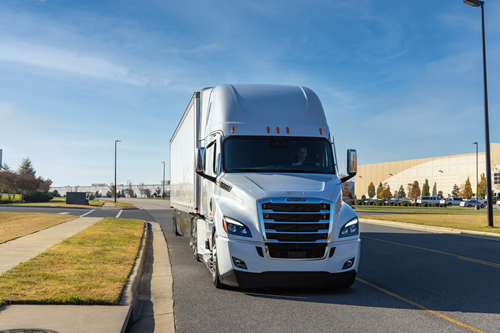
Here's my thoughts on spec 'ing a truck in regards to fuel consumption and performance at 80,000 lbs when the majority of trucks seldom are loaded to 80,000lbs gross vehicle weight.
(G.V.W.) The median weight I have heard from different sources is that the average gross weight comes in at fifty to sixty thousand pounds. This got me to wondering; why don’t we concentrate on being able to haul 80,000 lbs well but to really excel in efficiently at fifty to sixty thousand pounds.
I must admit that I have been guilty of only concentrating on maximum GVW performance when looking at truck specifications. With that being said, I know there are people who spend the majority of their time at maximum gross weight so they need to spec their trucks to achieve best performance at 80,000 lbs. The greater percentage of freight falls at well below the maximum G.V.W. so spec’ing our vehicles to perform exceptional where the majority of our load weighs in at would make the most logical sense to me.
This is not only an issue of how much horse power a truck has but how many axles are on the ground, seventy percent of the time we only need four axles on the ground to carry our load. Taking all of this into consideration when I look at light loads such as furniture or insulation we only need 3 axles on the ground. Why are lift able pusher or tag axles on the tractor and a lift able axle on the trailer not more common place?
Not only would this aid in fuel economy by reducing unnecessary rolling resistance it should also increase tread life by putting the proper load on a tire to maximize the tires foot print. A lightly loaded tire is one of the leading causes of irregular tire wear due to uneven loading of the tread width. Keeping the tires loaded more closer to the weight they designed for would help curb irregular wear and there would be no wear at all to the tire lifted and not rolling on the road surface.
When spec’ing our trucks and trailers the important consideration should include; average length of empty dead head, and average gross loaded weight of the vehicle. If we spec our trucks this way it can only help us to have more money left over in our pockets or the bank.